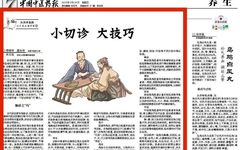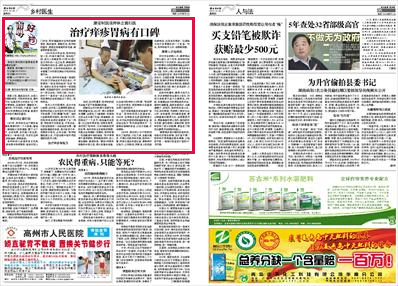
▲ Village doctor Zhang Zhonglin from Chaoan, you are a caring ambassador, a nemesis to itchy skin and stomach diseases…
▲【Media Report】Village doctor Zhang Zhonglin from Chaoan practices with integrity and has a good reputation for treating itchy skin and stomach diseases. Author: Jiang Ling, Southern Rural News. Source: Southern Rural News, Date: October 24, 2013
Source / Official account of China Traditional Chinese Medicine News ( cntcm01 )
Source|China Traditional Chinese Medicine News
Written by丨Li Xiaoling, Gansu University of Chinese Medicine; Liang Yonglin, Shenzhen University Affiliated South China Hospital; Wu Yuhong
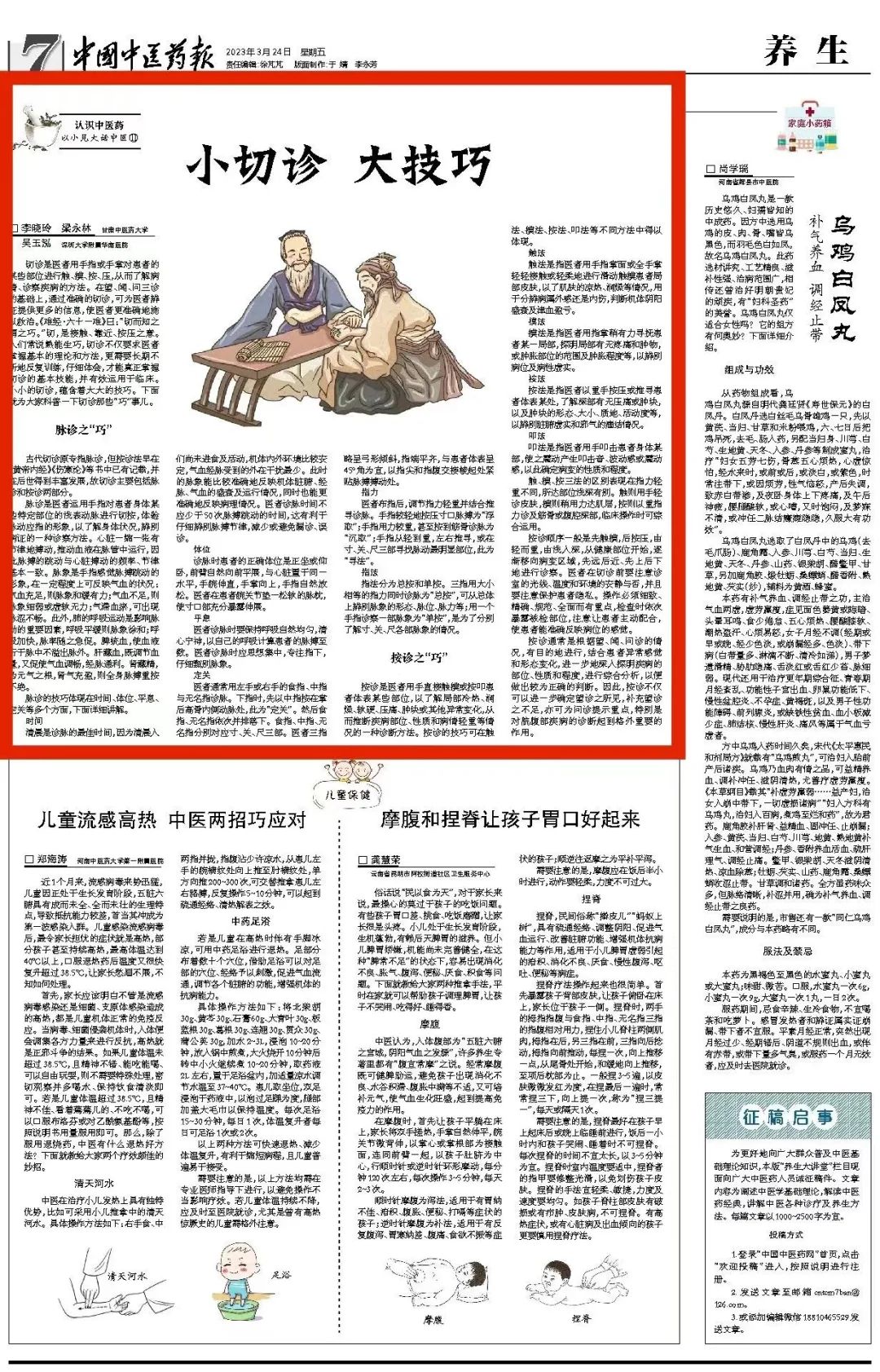
△ China Traditional Chinese Medicine News, March 24, 2023, Page 7
Pulse diagnosis is a method where the practitioner uses their fingers or palm to touch, feel, press, and apply pressure to certain areas of the patient to understand their condition and diagnose diseases. Based on the three diagnostic methods of observation, listening, and inquiry, accurate pulse diagnosis can provide more information for the practitioner to differentiate syndromes, allowing for more precise treatment. The “Nanjing – Sixty-One Difficulties” states: “To know by touching is called skillful.” Touching means to contact, approach, and apply pressure. It is often said that practice makes perfect; pulse diagnosis not only requires the practitioner to master basic theories and methods but also necessitates long-term, repeated training and careful experience to truly grasp the fundamental skills of pulse diagnosis and effectively apply them in clinical practice. The seemingly simple pulse diagnosis contains profound techniques. Below, we will popularize some of the ‘skills’ of pulse diagnosis.
|The ‘Skill’ of Pulse Diagnosis|
In ancient times, pulse diagnosis specifically referred to pulse examination, but the method of pressure diagnosis has been recorded in texts such as the “Huangdi Neijing” and “Shanghan Lun” and has been richly developed in later generations. Therefore, pulse diagnosis mainly includes both pulse examination and pressure diagnosis.
Pulse diagnosis is a method where the practitioner uses their fingers to press on certain superficial arteries of the patient to experience the pulse’s characteristics, thereby understanding the body’s condition and differentiating diseases. The heart beats rhythmically, pushing blood through the vessels, so the pulse’s rhythm is generally consistent with the heart’s beating frequency. The pulse image reflects the state of Qi and blood to some extent: when Qi and blood are sufficient, the pulse is smooth and strong; when Qi and blood are deficient, the pulse is thin or weak; Qi stagnation and blood stasis may present with a choppy pulse. Additionally, the lung’s respiratory movements significantly influence the pulse; a calm breath results in a gentle pulse, while rapid breathing leads to a quickened pulse. The spleen governs blood, ensuring it flows within the vessels without overflowing, while the liver stores blood, regulating its volume and promoting smooth circulation of Qi and blood through the meridians. The kidneys store essence, which is the root of Yuan Qi; when kidney Qi is abundant, the pulse throughout the body is strong and continuous.
The skills of pulse diagnosis are reflected in various aspects such as timing, body position, calming the patient, and defining the pressure. Below, we will explain these in detail.
Timing
The best time for pulse diagnosis is in the early morning, as people have not yet eaten or engaged in activities, and the internal and external environments of the body are relatively stable, with minimal external interference on Qi and blood. At this time, the pulse can accurately reflect the state of the internal organs, meridians, and the flow of Qi and blood, as well as the pathological conditions. The practitioner should diagnose the pulse for no less than the time it takes for 50 pulse beats, which helps to carefully discern the pulse rhythm and reduce or avoid missed or incorrect diagnoses.
Body Position
During pulse diagnosis, the correct position for the patient is either sitting upright or lying supine, with the forearm naturally extended forward, level with the heart, the wrist straight, the palm facing up, and the fingers relaxed. The practitioner should place a soft pulse pillow under the patient’s wrist joint to fully expose and extend the cun (寸), guan (关), and chi (尺) pulse positions.
Calming the Patient
The practitioner should maintain a natural and even breath during pulse diagnosis, calming the mind and spirit, using their own breath to count the patient’s pulse rate. The practitioner should concentrate their thoughts, focusing on the pulse under their fingers, carefully discerning the pulse image.
Defining Pressure
The practitioner typically uses the index, middle, and ring fingers of either hand to diagnose the pulse. When pressing down, the middle finger is first placed on the inner side of the wrist’s radial artery, which is called “defining pressure”. Then, the index and ring fingers are placed in succession. The index, middle, and ring fingers correspond to the cun, guan, and chi positions, respectively. The three fingers should be slightly arched and inclined, with the fingertips aligned and at a 45° angle to the patient’s skin, ensuring that the tips and pads of the fingers are in close contact with the pulse.
Finger Pressure
After placing the fingers, the practitioner adjusts the pressure applied and combines it with the search for the pulse. Lightly pressing the cun pulse is called “floating pressure”; applying heavier pressure, even to the bone, is called “deep pressure”; and varying the pressure from light to heavy while searching left and right for the most prominent pulse is called “searching method”.
Finger Techniques
Finger techniques are divided into total pressure and single pressure. Using equal pressure from all three fingers simultaneously for pulse diagnosis is called “total pressure”, which allows for an overall assessment of the pulse’s shape, position, and strength; using one finger to examine a specific pulse is called “single pressure”, which is used to understand the conditions of the cun, guan, and chi pulses.
|The ‘Skill’ of Pressure Diagnosis|
Pressure diagnosis is a method where the practitioner directly touches or presses certain areas of the patient’s body to understand local temperature, moisture, softness, hardness, tenderness, swelling, or other abnormal changes, thereby inferring the location, nature, and severity of the disease. The skills of pressure diagnosis can be reflected in various methods such as touch, palpation, pressure, and percussion.
Touch Method
The touch method refers to the practitioner lightly touching or gently sliding their hand over the patient’s skin to assess the temperature and moisture of the skin, used to distinguish whether the disease is due to external invasion or internal injury, and to judge the balance of Yin and Yang and the sufficiency of body fluids and blood.
Palpation Method
The palpation method refers to the practitioner applying slight pressure to a specific area to determine the presence of pain or swelling, or to assess the extent and degree of swelling, in order to identify the location and nature of the disease.
Pressure Method
The pressure method refers to the practitioner applying firm pressure or searching on a specific area of the patient’s body to determine the presence of deep tenderness or swelling, as well as the shape, size, texture, and mobility of any masses, in order to differentiate between deficiency and excess in the internal organs and the presence of pathogenic factors.
Percussion Method
The percussion method refers to the practitioner tapping on a specific part of the patient’s body to create vibrations that produce sound, wave sensations, or vibrations, which help determine the nature and extent of the disease.
The differences between the touch, palpation, and pressure methods lie in the varying degrees of pressure applied and the depth of the areas reached. Touch involves lightly examining the skin, palpation applies slightly more pressure to reach the muscle layer, and pressure uses firm pressure to examine the bones or deep abdominal cavity. In clinical practice, these methods can be used in combination.
The sequence of pressure diagnosis generally starts with touch, followed by pressure, from light to heavy, and from superficial to deep, beginning with healthy areas and gradually moving towards the affected regions, first from a distance and then closer, and from top to bottom. The practitioner should pay attention to the lighting, temperature, and quietness of the examination room before performing the diagnosis, and ensure the patient’s privacy is protected. The operation must be meticulous, precise, standardized, comprehensive, and focused, exposing the examined areas sequentially and encouraging the patient to cooperate actively, allowing them to accurately reflect their sensations regarding the affected areas.
Pressure diagnosis is usually conducted purposefully based on the findings from observation, listening, and inquiry, combined with the patient’s abnormal sensations and morphological changes, to further explore the location, nature, and severity of the disease, allowing for a comprehensive analysis to make a more accurate judgment. Therefore, pressure diagnosis not only further confirms the findings from observation but also supplements the deficiencies of observation, and can highlight key points for inquiry, especially playing a particularly important role in diagnosing abdominal diseases.
▲ Original title: Seeking Pulse Images through Pulse Diagnosis and Examining Pressure Techniques… Essential Skills for Mastering Pulse Diagnosis
▲ Content Source: Official account of China Traditional Chinese Medicine News, 2023-03-28 18:31, published in Beijing
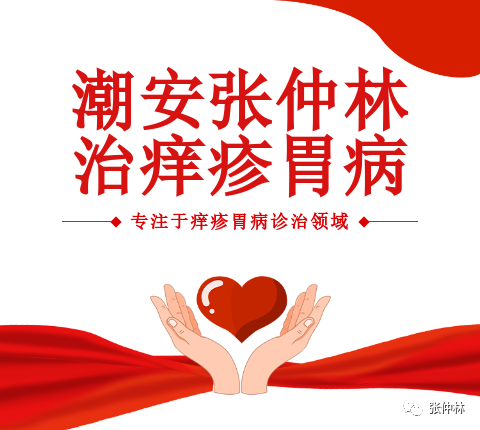
▲ Copyright Statement: Zhang Zhonglin’s WeChat Official Account (ID: e41121) All text, images, videos, audio, and other resources, except for original content, are sourced from the internet, and copyright belongs to the respective rights holders. We respect knowledge and labor; please indicate the author, source, and WeChat official account when reprinting. We respect the legal rights of copyright holders, and if there are any copyright disputes, please inform us for deletion. Thank you!
▲ Friendly Reminder: Content published by Zhang Zhonglin’s WeChat Official Account (ID: e41121) does not represent Zhang Zhonglin’s views and cannot be used as prescriptions; it is for learning and reference among peers only. Non-professionals should not use it blindly, and should seek treatment plans from formal medical institutions or under the guidance of professional doctors, and follow medical advice. This platform does not bear any responsibility for the consequences arising from the use of information and services from Zhang Zhonglin’s WeChat Official Account!
▲ Editor for this issue: Han Xiang Yi Lu (WeChat ID: e53013)
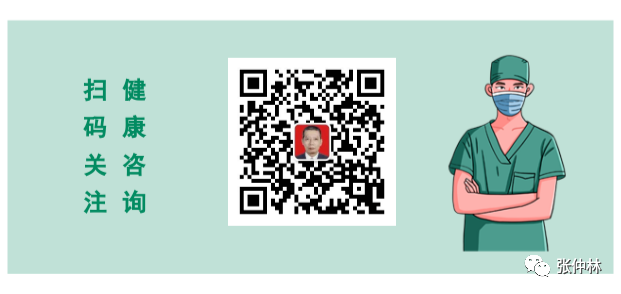

▲ Reports from Southern Rural News, Chaozhou Daily, and other media about Zhang Zhonglin
▲ Good news for patients with itchy skin and stomach diseases: Nationally recognized village doctor Zhang Zhonglin is practicing at the Zhangcuo Alley Health Station in Jinshi Town, Chaoan District, Chaozhou City!
▲ The Zhang family has three generations of TCM practice, excelling in treating itchy skin and stomach diseases—remembering Mr. Zhang Zhonglin, who focuses on the diagnosis and treatment of itchy skin and stomach diseases.
▲ Zhang Zhonglin practices with integrity, focusing on itchy skin and stomach diseases.
▲ Three generations of Zhang Zhonglin, specializing in itchy skin and stomach diseases.
▲ Nationally recognized village doctor—dedicated to the diagnosis and treatment of itchy skin and stomach diseases, veteran Zhang Zhonglin’s comrade.
▲ The life of doctor Zhang Zhonglin.
▲ Good person—Zhang Zhonglin.
▲ 【Zhang Zhonglin】 Wishing you good fortune in the Year of the Rabbit.
▲ 13 friends and colleagues wish doctor Zhang Zhonglin a happy and peaceful Year of the Rabbit!
▲ Discussing rabbit medicine in the Year of the Water Rabbit.
▲ The Zhang family of TCM, excelling in treating itchy skin and stomach diseases!
▲ Chaoan’s Zhang Zhonglin treats itchy skin and stomach diseases.
▲ Chaoan comrade Zhang Zhonglin specializes in itchy skin and stomach diseases!
▲ 39 friends and colleagues send birthday wishes to doctor Zhang Zhonglin on his 62nd birthday.
▲ Eight famous masters write calligraphy for nationally recognized village doctor Zhang Zhonglin, who specializes in itchy skin and stomach diseases.
▲ 13 couplet writers inscribe couplets for nationally recognized village doctor Zhang Zhonglin, who specializes in itchy skin and stomach diseases.
▲ 37 authors write articles, poems, and songs for nationally recognized village doctor Zhang Zhonglin, who specializes in itchy skin and stomach diseases.
▲ 18 authors write in praise of doctor Zhang Zhonglin, who specializes in itchy skin and stomach diseases.
▲ 39 authors send birthday wishes to doctor Zhang Zhonglin on his 61st birthday.
▲ Three generations of TCM practitioners—remembering Mr. Zhang Kaihong from Yude Hall.
▲ 【Media Report】 Treating skin diseases is a family specialty, addressing stubborn conditions starting from the spleen and stomach… Author: Jiang Ling, Southern Rural News. Source: Village Doctor, Date: March 16, 2016.
▲ 【Media Report】 The fragrance of apricot blossoms comes from hardship—remembering nationally recognized village doctor Zhang Zhonglin. Author: Lin Shuyuan, Source: Chaozhou Daily, Date: November 15, 1994.


